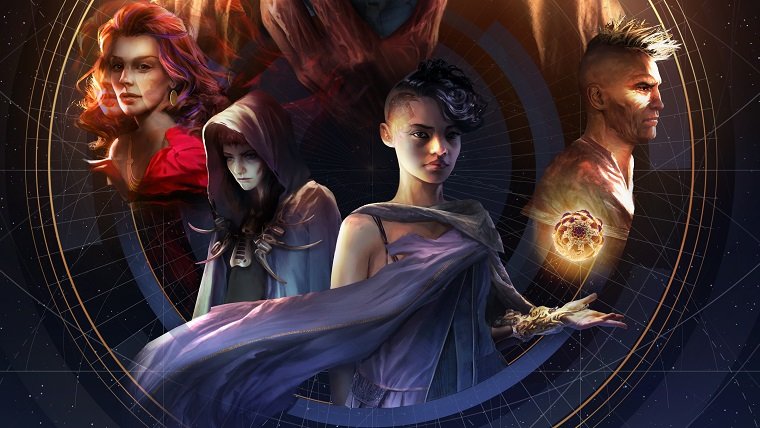While the RPG is a genre that never went away, it’s one that has undergone many changes through the years. Action is the main ingredient that is found more and more in RPGs of recent memory, which is often at the expense of truly immersive storytelling. Torment: Tides of Numenera’s goal is to deliver on the strengths of the genres humble foundations, and it accomplishes what it sets out to do masterfully.
For a little background, Torment: Tides of Numenera was brought to life to the tune of over $4 million on Kickstarter, with a passionate group of developers setting out to make a spiritual successor to the classic Planescape: Torment. Turns out more people wanted a more slow-paced and narrative-heavy game than many thought, and now several years later here we are with the finished product.
Similar to how Planescape: Torment bucked typical RPG tropes with its narrative, Torment goes a similar route. You’re not taking control of a character who has been chosen to save the world, but instead you are essentially a discarded shell of a powerful being called the Changing God. You are merely one of countless other Castoffs of this Changing God, and the game starts with you literally plummeting from the point where you were discarded. When you awake you have no memory of who you are or where you are, and thus begins your journey of discovery and survival in a truly strange world. It isn’t long before you realize that you are being hunted by something called the Sorrow, which is coming for you and every other Castoff in the Ninth World. Thus, it becomes your mission to survive against these deadly beings for as long as possible, all while searching for the Changing God himself to figure out just what exactly is going on.

The most striking thing about Torment is the level of detail in its world and characters. While it may not appear the most visually-stunning game on the surface, the level design is truly unique and makes each location memorable. However, what gives the game so much personality and depth is the fantastic writing that is overflowing from this game’s seams. The game has no problems with dumping pages worth of text at you for what may seem like unimportant character interactions, but in reality you are learning more about the game’s twisted world and likely activating a new quest or getting insight on one you may have active already. While the amounts of text that you need to read through can occasionally get tiring, the strength of the writing keeps this from getting as pronounced as it would be in other games of this type.
Torment’s world oozes personality and depth that begs to be explored
Each character interaction has several branches that you can choose from, which will take the conversation in a variety of different directions. Depending on the type of character that you decide to create (Warrior, Wizard or Rogue), you may elect to proceed by persuading, intimidating or even battling the person you’re communicating with. Your actions will end up altering the game’s Tides, which represent the reactions you inspire in your peers. Each tides has a specific color (Blue, Gold, Indigo, Red and Silver), which ultimately impacts your character’s legacy. Your legacy then impacts your characters abilities and enhances certain skills, meaning that your dialogue choices further add to the game’s character building outside of the standard stat progression from leveling up.
Combat in Torment takes place in a turn-based fashion, with you and your allies and enemies appearing in an isometric view that moves seamlessly from the game world. You have the ability to move around the battlefield to get within range of an enemy to then launch an attack, or forfeit your attack to move further and potentially get out of harms way. While these encounters can be pretty standard fare if you go the typical attack route, Torment spices things up by allowing you communicate with your enemies. There will be certain situations where you can get a conversation going, and if you play your cards right you can actually end the encounter right there.

In fact, Torment is at its best when you are avoiding combat altogether. The game has large stretches of time where you won’t be doing anything other than exploring the game’s world and interacting with its inhabitants, though it keeps that from getting stale with its Effort system. Doing things like trying to persuade a character or attempting to repair a machine requires a certain amount and type of effort on you or one of your characters’ part, which could be Might, Speed of Intellect. Rather than having these needing to be at a certain level to make your task successful, you can use more of your available stat’s pool to increase the chances of success. For example, you may initially only have a 20% chance to successfully climb a rocky mountain ledge to get to a new area, but if you spend more of your available Speed points you can get that number closer to 100%.
Each of the aforementioned Effort stats have a limited amount of usable points, and these points are mainly restored by resting. This means that the game will often put you in situations where you won’t be able to perform a task to the best of your ability, which translates to failure being more likely. Thankfully, Torment is the kind of game where failure can often be even more interesting than success, leading to humorous scenarios that you wouldn’t have otherwise known were possible. They can also be used in combat to increase the power of your attacks, making this system an imperative aspect of the game.
Resting also brings to light another aspect of gameplay, and that’s timed quests. You’ll come across some quests that will allow you to complete then at your own pace, but others will punish you if you lollygag too much. One example is a quest that has you seeking out a murderer at large, hunting for clues this person has left behind. Complete the quest as soon as it becomes active and there will be no issues, but if you rest while it’s in-progress then you’ll be alerted that the murderer has claimed another life in the area. This gives the game and its world more of a sense of urgency, which is nice considering its otherwise slow and steady pacing.

While this is a game that is definitely built with PC players in mind, we played the majority of the game on PlayStation 4. We’re happy to report that the game’s UI is easy to manage with a controller rather than a mouse and keyboard, and it creates no real hassles when trying to navigate the game’s world. However, the game doesn’t run as smoothly as it could on PlayStation 4 currently, with hitching and stuttering being a common occurrence. It’s not enough to make the game a chore to play, but it’s an annoyance nonetheless.
The Verdict
Torment: Tides of Numenera may not be for gamers that are accustomed to more fast-paced and action-heavy RPGs, but those who appreciate a well-developed world and characters will find a lot to enjoy here. It’s overflowing with depth and personality, and the many ways that you can navigate through it make it truly feel alive. If you’ve been dreaming of RPGs returning to a time where depth and detail were the genre’s blood and bones, then this is the game for you.











Published: Feb 28, 2017 02:00 am